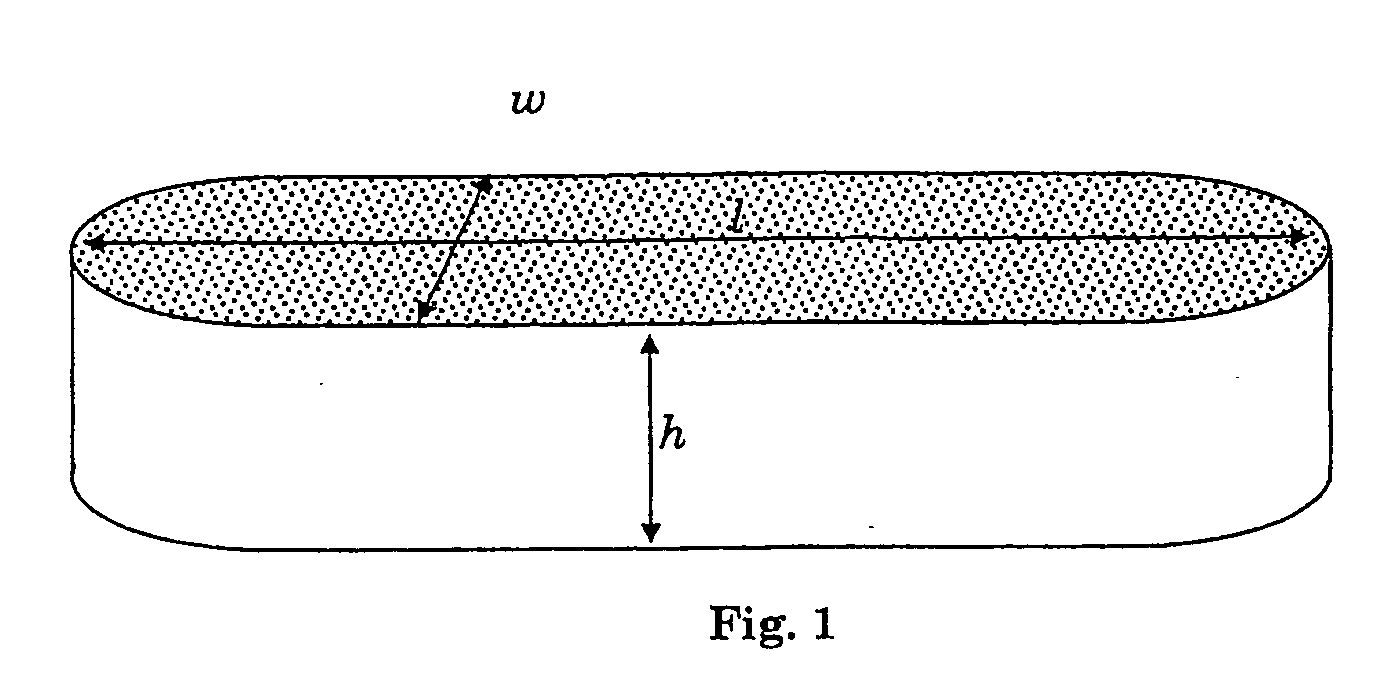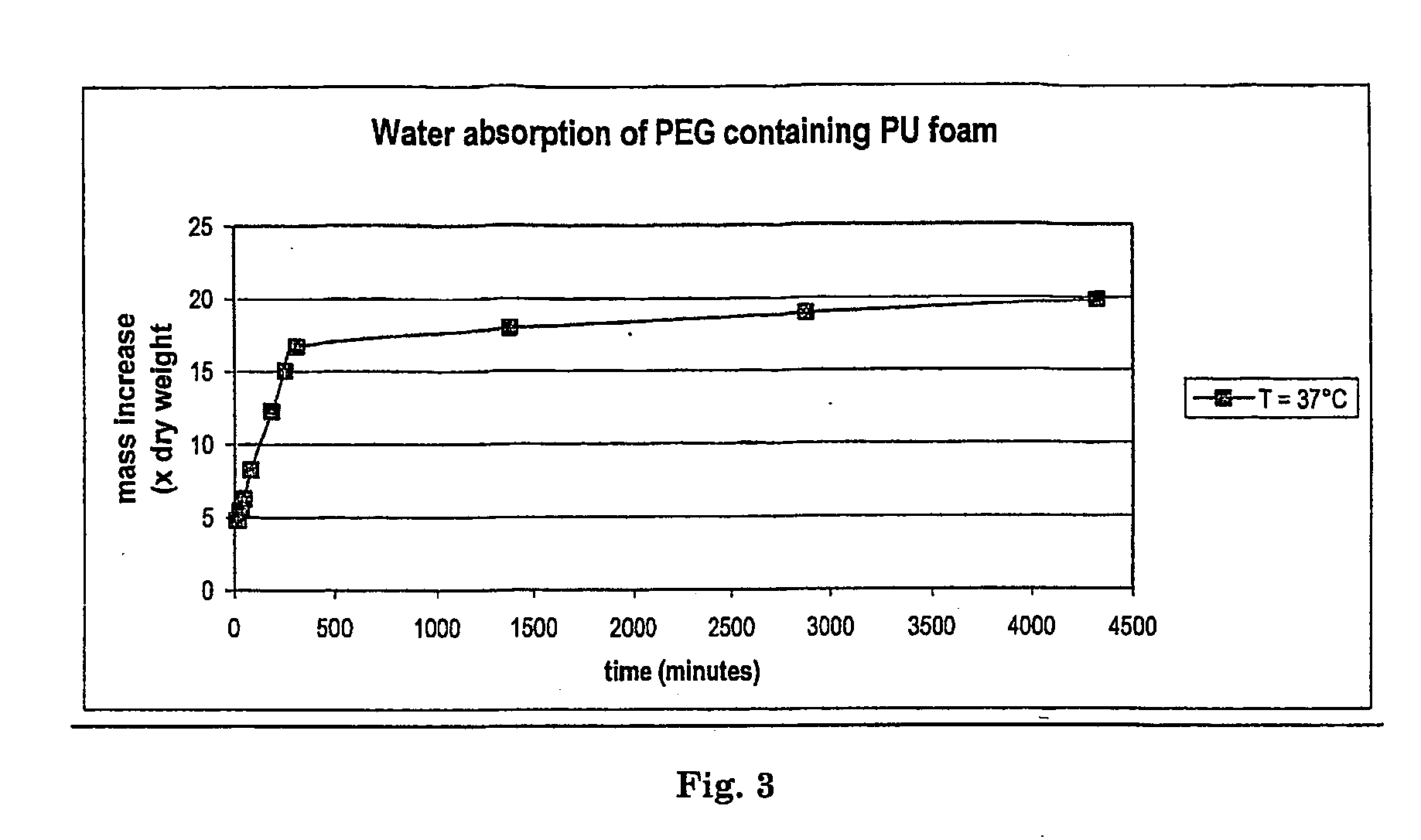Biomedical foams
- Summary
- Abstract
- Description
- Claims
- Application Information
AI Technical Summary
Benefits of technology
Problems solved by technology
Method used
Image
Examples
example 1
(50 / 50) glycolide-ε-caprolactone pre-polymer (Mn=2000)
[0141] The pre-polymer was synthesized by ring opening polymerization of ε-caprolactone and glycolide in a 50 / 50 (mol / mol) ratio using 1,4-butanediol as initiator and stannous octoate as catalyst (M / I=10000). After reaction at 130° C. for 6 days, 1H-NMR shows complete monomer conversion. Thermal analysis shows a completely amorphous pre-polymer with a glass transition temperature between −40 and −35° C.
example 2
(50 / 50 glycolide-ε-caprolactone) pre-Polymer initiated with PEG1000 (Mn=2000)
[0142] The pre-polymer was synthesized by ring opening polymerization of ε-caprolactone and glycolide in a 50 / 50 (mol / mol) ratio using polyethyleneglycol (PEG) with a molecular weight of 1000 as initiator and stannous octoate as catalyst (M / I=10000). PEG is dried under vacuum at 50° C. during at least 8 hours, where after the monomers and catalyst are added. The mixture is reacted at 140° C. for 6 days, 1H-NMR shows complete monomer conversion. Thermal analysis shows a semi-crystalline pre-polymer with a glass transition temperature between −50° C. and −40° C., a crystallisation peak between −10° C. and 0° C. and a melting peak of the PEG segment of 15-20° C.
example 3
(20 / 40 / 40) lactide-glycolide-ε-caprolactone pre-polymer (Mn=2000)
[0143] The pre-polymer was synthesized according to the method of example 1 by ring opening polymerization of ε-caprolactone, glycolide and lactide in a 40 / 40 / 20 (mol / mo / mol) ratio using 1,4-butanediol as initiator and stannous octoate as catalyst (M / I=10000). Thermal analysis shows a completely amorphous pre-polymer with a glass transition temperature between −22° C. and −23° C.
PUM
| Property | Measurement | Unit |
|---|---|---|
| Temperature | aaaaa | aaaaa |
| Temperature | aaaaa | aaaaa |
| Temperature | aaaaa | aaaaa |
Abstract
Description
Claims
Application Information
 Login to View More
Login to View More - R&D
- Intellectual Property
- Life Sciences
- Materials
- Tech Scout
- Unparalleled Data Quality
- Higher Quality Content
- 60% Fewer Hallucinations
Browse by: Latest US Patents, China's latest patents, Technical Efficacy Thesaurus, Application Domain, Technology Topic, Popular Technical Reports.
© 2025 PatSnap. All rights reserved.Legal|Privacy policy|Modern Slavery Act Transparency Statement|Sitemap|About US| Contact US: help@patsnap.com



